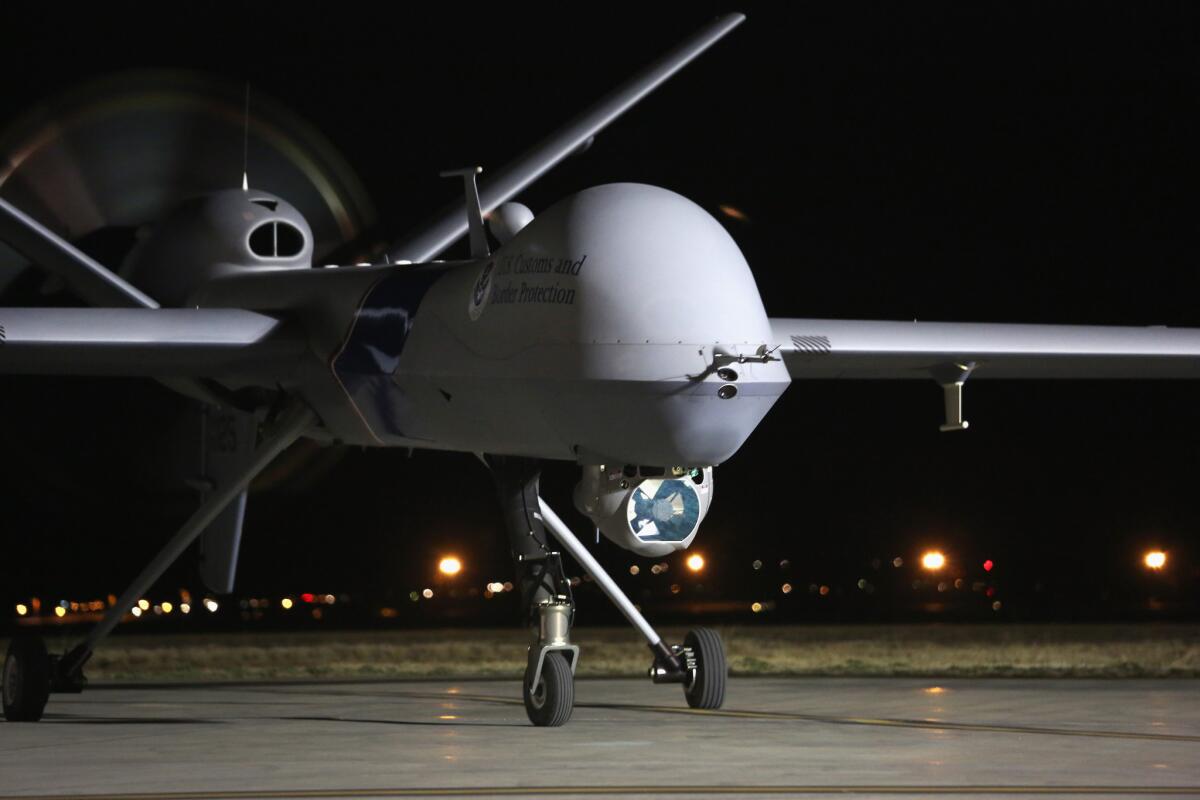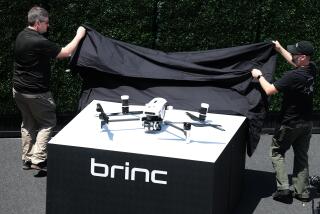FAA making plans for drone flights in U.S.

- Share via
WASHINGTON — The Federal Aviation Administration published a plan Thursday that sets the stage for law enforcement agencies, businesses, universities and hobbyists to begin flying remotely piloted aircraft, better known as drones, in the United States by 2015.
The 74-page document immediately drew flak from some privacy advocates, who say that the FAA needs to clarify how the government and private users can use video and other data from surveillance drones, and how long it can be stored.
“As far as commercially flying these things, I think we are still two years away from that,” said Ben Gielow, government relations manager for the Assn. for Unmanned Vehicle Systems International, an industry group.
The new plan “is a big step for FAA to make, but clearly, more needs to be done,” Gielow said.
FAA Administrator Michael Huerta estimated that 7,500 small drones could be aloft within five years if federal regulations are written on schedule. He said the chief concern was requiring drone designs and pilot training to help prevent unmanned planes from colliding with other aircraft.
“We have operational goals and safety issues we need to consider as we expand the use of unmanned aircraft,” Huerta told an aerospace conference Thursday at a hotel in Washington.
More than 80 law enforcement agencies have FAA permission to fly drones, and universities are testing drones for weather forecasting and agricultural and industrial uses.
By the end of this year, the FAA is scheduled to choose test sites in six states where manufacturers can bring drones for evaluation by federal safety experts, Huerta said. Twenty-four states — including California, Florida, Nevada and Arizona — have applied to host the tests.
According to the FAA, the state governments or universities that oversee the test sites must describe their policies for privacy, data use and data retention. The document released Thursday did not set those polices, but said drone operators must “comply with federal, state, and other laws on individual privacy protection.”
Ryan Calo, who teaches robotics law at the University of Washington School of Law in Seattle, said the document shows that FAA officials are at least considering privacy concerns.
“Here they are taking a different tack and embracing the idea that privacy is a necessary consideration,” Calo said in a telephone interview. “That is part of a change from when they were saying, ‘We are not about privacy. We are really all about safety.’”
Christopher Calabrese, legislative counsel with the American Civil Liberties Union, said the FAA needed to expand privacy requirements to include “concrete restrictions on how data from drones can be used and how long it can be stored.”
The ACLU has urged Congress to support laws introduced in the House and the Senate that would require police to get judicial approval before using a drone.
Under a law passed in 2012, the FAA must provide for the “safe integration” of commercial drones into domestic airspace by 2015. But the agency has missed several deadlines. Safety rules for small drones won’t be issued before 2014, for example, three years behind schedule.
Until regulations establish who can fly a drone and where, Huerta said, the FAA will license drone operators on a case-by-case basis.
Huerta said the first commercial drone flight approved by the FAA took place in September in “the rainy skies above the Arctic Circle.”
The Houston-based oil company ConocoPhillips flew a small drone with a 10-foot wingspan on a 36-minute loop over the Chukchi Sea off northwest Alaska.
The drone, called a ScanEagle, has been used by Marines in combat in Afghanistan. The oil company used it to record footage of marine mammals and ice floes for an environmental impact study required to obtain permission for drilling in the ocean floor.
More to Read
Sign up for Essential California
The most important California stories and recommendations in your inbox every morning.
You may occasionally receive promotional content from the Los Angeles Times.











